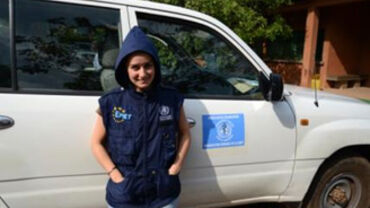Epidemiological update: first Ebola case diagnosed outside West Africa, 30 September 2014
On 30 September 2014, the US Centers for Disease Prevention and Control (CDC) announced the first imported case of Ebola linked to the current outbreak in Western Africa.
On 30 September 2014, the US Centers for Disease Prevention and Control (CDC) announced the first imported case of Ebola linked to the current outbreak in Western Africa. Since the start of the outbreak affecting four West African countries there have been more than 6 500 cases of Ebola virus disease (EVD), of which more than 3 000 people are reported to have died, according to reports from the WHO.
The individual who had recently arrived from Liberia was diagnosed in Dallas, Texas. This person is not a healthcare worker and was visiting relatives in the USA.
The person was reported to be asymptomatic when leaving West Africa and remained asymptomatic while travelling and upon arrival in the USA on 20 September. The case developed symptoms around 24 September, sought medical care on 26 September and was hospitalised and isolated on 28 September 2014.
The US health authorities are investigating contact persons in the USA who may be at risk of infection from this patient. Being asymptomatic while travelling from Liberia to the USA, it is very unlikely that the individual would have infected others during the flights. The person reported developing symptoms only several days after the flights and therefore was not contagious during that period.
It is not unexpected that a person who has travelled to an Ebola affected area develops Ebola virus disease after arriving in a non-affected country as long as the outbreak in West Africa continues. Transmission to close contacts of the case, while in the early stage of the disease and before it is recognised as Ebola, cannot be excluded.
As outlined in ECDC’s latest update to its rapid risk assessment, the risk of Ebola virus transmission is dependent on the early detection of suspected EVD cases imported into a non-affected country including the EU. The time window of highest risk of potential transmission ranges from the onset of first symptoms and the recognition of the possibility of EVD by healthcare professionals.
Once a case is detected and appropriate Ebola infection control measures are implemented, the risk of transmission becomes extremely low. Interventions for reducing the risk of spread from an imported case should therefore aim to narrow this window. This can be done for instance by informing passengers arriving from affected countries of the possibility to develop EVD and by reminding frontline healthcare professionals of this possibility when assessing a case having come from affected countries within the past three weeks. This is particularly relevant for a situation such as the case in Dallas, Texas.
Read the CDC announcement: CDC and Texas Health Department Confirm First Ebola Case Diagnosed in the U.S. (CDC website)
Risk of importation and further transmission Imported cases diagnosed in the EU
A person may travel while incubating the disease and therefore not present with symptoms at the time of arrival, or may arrive sick because they developed symptoms while travelling. EVD can develop quickly, and cases are not always aware that they have been exposed to Ebola virus. Incubating cases do not show symptoms and cannot be detected through screening at points of exit or entry. They may be unaware of exposure or deny it, and when presenting to an EU healthcare facility, clinicians may not suspect EVD. There is a risk that that individual infects close contacts in the period when they are infectious and before EVD is recognised.
Medical Evacuation to the EU
The risk of Ebola virus spreading from an EVD patient who arrives in the EU as result of a planned medical evacuation is considered extremely low. The risk of spread is minimal when recommended infection-prevention and control measures are followed and the staff organising the evacuation – and the staff at the institution receiving the evacuated EVD patient – are well trained.
Patients presenting with symptoms and seeking medical attention in the EU
There is a possibility that persons who were exposed to Ebola virus and are symptomatic seek medical attention in the EU. Should they not be prevented from travelling due to exit screening in the affected country, it is highly likely that such patients would report to a healthcare facility upon arrival in the EU and then be isolated to prevent further transmission. Once the possibility of EVD has been recognised and healthcare providers have taken precautions to stop transmission, the risk of spread is reduced to a minimum.







